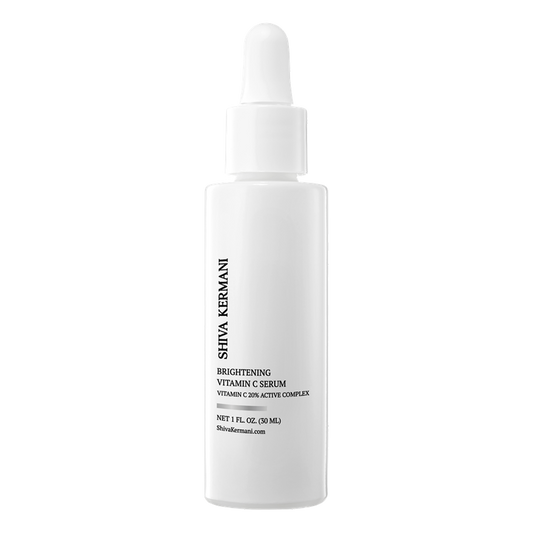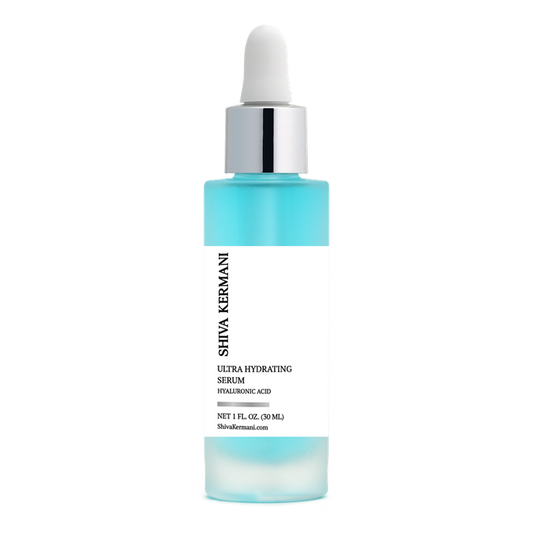Retinol, a derivative of vitamin A, is a cornerstone in anti-aging skincare. Its efficacy in reducing fine lines, wrinkles, and improving skin texture has made it a sought-after ingredient. By accelerating cell turnover and enhancing collagen production, retinol promotes a youthful complexion.
Understanding how retinol works is essential for its effective use. It penetrates the skin, neutralizing free radicals and stimulating elastin and collagen synthesis. This process not only diminishes existing wrinkles but also prevents new ones from forming.
Incorporating retinol into your skincare routine requires a thoughtful approach. Starting with a low concentration and gradually increasing usage can help minimize potential irritation. Additionally, pairing retinol with hydrating ingredients like hyaluronic acid can enhance its benefits while maintaining skin moisture.
Consistency is key when using retinol. Visible improvements may take several weeks to months. However, with regular application, retinol can significantly enhance skin appearance, making it a valuable component in anti-aging skincare.
What Is Retinol and How Does It Work?
Retinol, a derivative of vitamin A, plays a pivotal role in skincare, particularly in anti-aging treatments. As a form of vitamin A, retinol is integral to various bodily functions, including vision and immune support. In skincare, retinol's prominence arises from its ability to enhance skin appearance.
Retinol accelerates skin cell turnover by promoting the shedding of old cells and stimulating the production of new ones. This process leads to a fresher, more radiant complexion. Additionally, retinol stimulates collagen production, a protein essential for maintaining skin's firmness and elasticity. Increased collagen levels help reduce the appearance of fine lines and wrinkles, contributing to a more youthful look.
Moreover, retinol improves skin texture by unclogging pores and smoothing rough patches. Its exfoliating properties help fade hyperpigmentation and even out skin tone. These combined effects make retinol a valuable component in anti-aging skincare routines.
Incorporating retinol into your regimen requires careful consideration. Starting with lower concentrations and gradually increasing usage can help minimize potential irritation. It's advisable to apply retinol products at night and use sunscreen during the day, as retinol can increase skin's sensitivity to sunlight. By understanding and utilizing retinol's benefits, you can enhance your skincare routine and achieve a more youthful complexion.
The Anti-Aging Benefits of Retinol
Retinol, a derivative of vitamin A, is renowned for its anti-aging properties. Regular application of retinol can significantly diminish fine lines and wrinkles. It achieves this by promoting collagen production, a protein essential for skin's firmness and elasticity. As collagen levels increase, skin becomes more resilient, resulting in a smoother appearance.
In addition to reducing wrinkles, retinol addresses uneven skin tone. It accelerates cell turnover, shedding dead skin cells and promoting the growth of new ones. This process helps fade dark spots and hyperpigmentation, leading to a more uniform complexion. Consequently, skin appears brighter and more youthful.
Furthermore, retinol enhances overall skin health. By unclogging pores, it reduces the occurrence of acne and blemishes. Its exfoliating properties refine skin texture, making it smoother to the touch. Moreover, retinol's ability to stimulate new blood vessel formation improves skin tone and color. These combined effects make retinol a cornerstone in anti-aging skincare routines.
Incorporating retinol into your skincare regimen requires a thoughtful approach. Start with a low concentration to assess your skin's tolerance. Apply it at night, as retinol can increase sun sensitivity. Always use sunscreen during the day to protect your skin. With consistent use, retinol can transform your skin, offering a more youthful and radiant appearance.
How to Introduce Retinol into Your Skincare Routine
Introducing retinol into your skincare routine can yield significant anti-aging benefits. However, it's essential to approach its incorporation thoughtfully to minimize potential irritation. Begin by selecting a product with a low concentration of retinol, especially if you're new to this ingredient. This allows your skin to acclimate gradually, reducing the likelihood of adverse reactions. Additionally, perform a patch test by applying a small amount to a discreet area and observing for any signs of sensitivity over 24 hours.
When starting, apply retinol at night, as it can increase your skin's sensitivity to sunlight. Initially, use it once a week for the first week. If well-tolerated, increase to twice a week during the second week, and then three times a week in the third week. Gradually build up to nightly use, depending on your skin's response. This gradual introduction helps your skin adjust without becoming overwhelmed.
To apply, cleanse your face and ensure it's completely dry, as damp skin can increase retinol absorption, potentially leading to irritation. Dispense a pea-sized amount of retinol and distribute it evenly across your face, avoiding the eye area. After application, follow up with a moisturizer to hydrate and support the skin barrier. This layering technique can help mitigate dryness or peeling associated with retinol use.
Consistency is crucial when using retinol for anti-aging purposes. However, patience is equally important, as visible results typically emerge after several weeks of regular use. Always monitor your skin's reaction and adjust usage frequency if you experience persistent irritation. Additionally, incorporate a broad-spectrum sunscreen into your daily morning routine, as retinol can make your skin more susceptible to UV damage.
By thoughtfully integrating retinol into your skincare regimen, you can harness its anti-aging properties while maintaining skin health. This approach ensures you reap the benefits of retinol without unnecessary discomfort.
Avoiding Irritation: Tips for Sensitive Skin
Introducing retinol into your skincare routine can yield remarkable anti-aging benefits. However, for those with sensitive skin, it's essential to approach retinol use cautiously to minimize potential irritation. To start, choose a retinol product with a lower concentration, as higher strengths may increase the risk of dryness, redness, and peeling. Applying retinol to broken, irritated, or sunburned skin should be avoided.
A highly effective method to reduce retinol-induced irritation is buffering, which involves combining retinol with a moisturizer to dilute its potency, making it more tolerable for sensitive skin. This technique hydrates the skin and acts as a barrier, offering the benefits of retinol without the unpleasant side effects. Alternatively, the "sandwich method" can be employed, where you apply a layer of moisturizer before and after the retinol application. This approach creates a protective buffer, reducing the likelihood of irritation.
When incorporating retinol into your routine, it's advisable to start with a low concentration and gradually increase usage as your skin builds tolerance. Initially, apply retinol once or twice a week, and if well-tolerated, slowly increase the frequency. This gradual introduction helps your skin adjust without becoming overwhelmed.
Additionally, it's crucial to avoid using retinol on broken, irritated, or sunburned skin. If you're undergoing treatments like chemical peels, waxing, or micro-needling, discontinue retinol use a week in advance to prevent excessive irritation. By following these guidelines, you can effectively harness the benefits of retinol for anti-aging while maintaining your skin's health and comfort.
Combining Retinol with Other Skincare Ingredients
Integrating retinol into your skincare routine can yield significant anti-aging benefits. However, combining it with other ingredients requires careful consideration to maximize results and minimize potential irritation. Certain ingredients complement retinol's effects, while others may counteract its benefits or increase sensitivity.
Ingredients such as hyaluronic acid, peptides, and niacinamide pair well with retinol. Hyaluronic acid, a powerful humectant, attracts moisture to the skin, combating the dryness retinol might cause. Peptides support skin structure by promoting collagen production, enhancing retinol's firming effects. Niacinamide, or vitamin B3, improves skin barrier function and reduces inflammation, mitigating potential irritation from retinol use. These combinations enhance the efficacy of retinol for anti-aging.
Conversely, certain ingredients should be avoided when using retinol. Alpha-hydroxy acids (AHAs) and beta-hydroxy acids (BHAs), like glycolic and salicylic acids, exfoliate the skin. When combined with retinol, they can lead to excessive dryness and irritation. Similarly, benzoyl peroxide, commonly used to treat acne, may cause redness and peeling when used alongside retinol. Additionally, layering retinol with vitamin C can increase skin sensitivity. To prevent adverse reactions, it's advisable to use these active ingredients at different times.
Incorporating retinol into your regimen requires a thoughtful approach. Start with a low concentration and gradually increase usage as your skin builds tolerance. Combining retinol with hydrating and soothing ingredients can enhance its benefits while minimizing potential side effects. By understanding how to pair retinol with other skincare components, you can optimize your routine for healthier, more youthful skin.
Common Retinol Mistakes and How to Fix Them
Integrating retinol into your skincare routine can yield significant anti-aging benefits. However, common mistakes may lead to unwanted irritation. A frequent error is overusing retinol, assuming more product accelerates results. Instead, excessive application often causes redness and peeling. To avoid this, apply a pea-sized amount to dry skin at night. This ensures effectiveness without overwhelming your skin.
Another mistake is neglecting sunscreen during retinol use. Retinol increases cell turnover, revealing fresh, sensitive skin more prone to sun damage. Without protection, you risk hyperpigmentation and counteract retinol's benefits. Therefore, apply a broad-spectrum sunscreen daily, even on cloudy days. This shields your skin from harmful UV rays and complements your anti-aging efforts.
Improper layering of skincare products can also lead to issues. Combining retinol with strong actives like AHAs or benzoyl peroxide may cause irritation. To prevent this, use retinol in the evening and other actives on alternate nights. This approach allows your skin to benefit from each ingredient without unnecessary stress.
By understanding and correcting these common mistakes, you can effectively harness the power of retinol for anti-aging. Remember, patience and proper application are key to achieving a healthier, more youthful complexion.
Conclusion
Incorporating retinol into your skincare routine can yield significant anti-aging benefits. However, it's essential to approach its use thoughtfully to maximize results and minimize potential side effects. Retinol, a derivative of vitamin A, enhances skin cell turnover, promoting a smoother and more youthful complexion. By stimulating collagen production, it effectively reduces the appearance of fine lines and wrinkles.
To integrate retinol successfully, start with a low concentration, applying it sparingly to allow your skin to adjust. Gradually increase usage as tolerated. Additionally, pairing retinol with hydrating ingredients like hyaluronic acid or ceramides can help mitigate dryness and irritation. Always apply sunscreen during the day, as retinol can increase your skin's sensitivity to the sun.
Consistency and patience are key when using retinol. Visible improvements may take several weeks to months. By following these guidelines, you can effectively harness the benefits of retinol for anti-aging, achieving a healthier and more radiant complexion.





